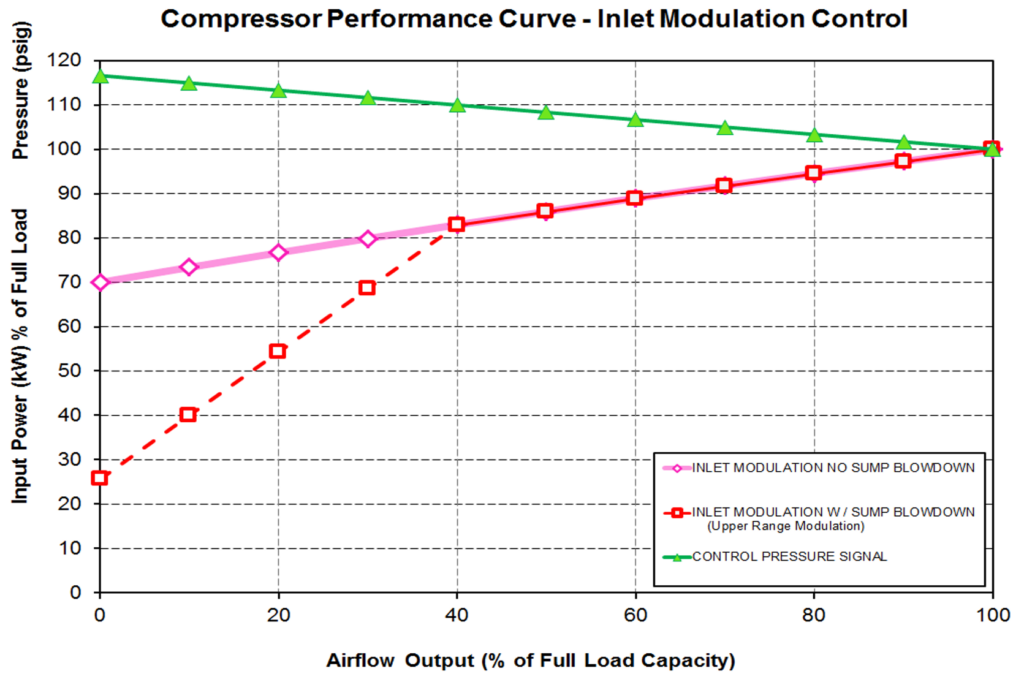In this blog post, we will discuss the second of five industrial compressor capacity control modes. The least efficient method of controlling a compressor at part load is using modulating mode by way of pneumatically controlled inlet valve control.
With this mode, a pneumatic system detects the compressor discharge pressure and compares it to a fixed pressure setting. If there is a difference, an inlet valve will operate to open or close an inlet valve to control the flow output of the compressor — and return the discharge pressure to the setpoint. In this mode, the power only turns down 3% for every 10% of flow reduction, resulting in 70% power consumption at zero flow for compressors using straight modulation — extremely inefficient.

This mode of operation is available only on lubricated compressors, and usually on compressors built in North America. Due to high power costs, the companies from Europe figured out a long time ago that the resulting inefficiency is way too costly.
Companies soon realized the resulting inefficiency at lower levels of flow, so unloading circuits are added to compressors to unload them when the flow drops to less than 40% flow. When a compressor hits levels below this level, a pressure switch trips and unloads the compressor to about 30% of full load power while producing no air; this is more efficient than keeping the compressor modulated.
If your compressors are operating in modulation mode, it is recommended that you have someone look at your system to optimize the efficiency. This usually results in some more storage receiver capacity being installed (modulation can operate with no storage capacity) and the compressors switched to load/unload mode, which is often more efficient.
As a reminder, the five different capacity control modes for lubricated screw compressors are:
- Start/stop — simply starting and stopping the compressor using pressure switch control. Very efficient but can only be used on small compressors.
- Modulation — choking of the inlet flow of air using an inlet valve. Very inefficient at part loads.
- Load/unload — Loading and unloading a compressor using inlet valve control and sump blowdown. Moderately efficient if the compressor has access to large storage.
- Variable displacement — Opening up ports in the screw to bypass the compression element. Good efficiency if set up correctly.
- Variable speed drive — Speeding up or slowing down the compressor to vary its output flow. Most efficient operation at part load if applied properly.
In the next blog post, we will discuss the load/unload control mode.
Filed Under: Air Compressors, Air Preparation, Components Oil Coolers, Compressed Air Technologies, Engineering Basics, Pneumatic Tips, Technologies